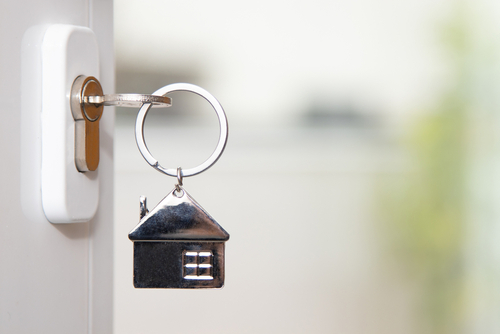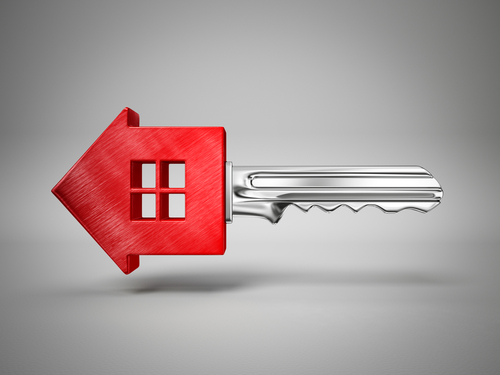
Would-be buyers with a 5% deposit face paying £300 per month more in mortgage repayments than if they continued renting, says Hamptons.
The mortgage rate would need to fall from 6.1% to around 4.2% to make the monthly cost of renting and buying in Great Britain similar.
Higher mortgage rates mean buying with a 5% deposit doesn’t currently make financial sense south of Birmingham.
Across Scotland and the three northern regions of England (North West, North East and Yorkshire & Humber) the monthly cost difference between renting and buying with a 5% deposit is below £100 per month. In the Midlands there’s a higher difference of £117 to £122 per month.
Further south, where affordability is most stretched, most renters would find themselves significantly worse off each month by purchasing a home. In the South West, an average first-time buyer with a 5% deposit pays £341 per month more to buy a similar home. Meanwhile, in London, servicing a mortgage would cost the average tenant an extra £775 per month, which equates to £9,300 a year.
That said, the gap between renting and buying has narrowed since mortgage rates peaked last year.
Back in November 2022, the average tenant in Great Britain would pay £547 per month to buy their rental home with a 5% deposit, £247 a month more than the extra £300 per month needed to buy last month.
While the gap has been closing, current mortgage rates remain a barrier for most buyers with a small deposit, particularly given that they will be stress-tested at even higher rates. Furthermore, negligible house price growth has slowed the rate at which homeowners can build equity to fund their next move.
According to Bank of England data, the average mortgage rate offered to a would-be buyer with a 5% deposit currently stands at 6.1%.
Nationally, this rate would have to fall to around 4.2% to make the monthly cost of renting and buying with a 5% deposit similar. Across the south of the country, the falls would need to be even larger. In London, it would take a rate of 3.6% to equalise the cost of renting and buying on a monthly basis (table 1).
The high cost of buying relative to renting is reflected in statistics from the current mortgage guarantee scheme (introduced in 2021) where the government essentially guarantees potential lender losses in a bid to boost 95% LTV (loan-to-value) lending. High interest rates meant that mortgage guarantees in 2023 ran at just 35% of the 2022 average, with completions currently around 15% of the level that Help to Buy achieved.
The completions that have used the mortgage guarantee scheme are typically concentrated in the north of England where affordability is less stretched. The latest government figures, which run to the end of 2023, show that the scheme has guaranteed three times more mortgages in the North West than in London.
Aneisha Beveridge, Head of Research at Hamptons, says: “Despite rental growth setting at around 6% year-on-year, renting remains more cost-effective than buying for most households across the country. High mortgage rates have squeezed buyers with small deposits out of the market, forcing more households to rent for longer. The uplift in the monthly cost to buy a home with a small deposit has made purchases unviable in most places south of Birmingham.
“Both the Labour and Conservative Parties have included mortgage guarantee schemes in their manifestos to boost the availability of 95% loan-to-value deals. However, their effectiveness will probably be determined by Threadneedle Street rather than Downing Street. The extent to which the Bank of England reduces rates will shape the numbers of would-be buyers with small deposits more than the best-designed government policy.
“This analysis also suggests that in a world of high interest rates, the take up of the Conservative's 0% capital gains tax incentive for landlords to sell to their tenant is likely to be fairly low, too. Rather, a Help to Buy style scheme is better suited to help renters with small deposits become homeowners, particularly when compared to the mortgage guarantee scheme. It was the Help to Buy Equity Loan which aided affordability in the most expensive markets, serving to top up deposits and significantly reduce mortgage repayments for the first five years.
Table 1 – The rate required to equalise the monthly cost of renting and buying with a 5% deposit in May 2024
|
London
|
3.6%
|
|
East of England
|
3.8%
|
|
South West
|
3.8%
|
|
South East
|
3.9%
|
|
Wales
|
4.7%
|
|
East Midlands
|
4.9%
|
|
West Midlands
|
5.2%
|
|
Yorkshire & Humber
|
5.7%
|
|
North West
|
6.0%
|
|
Scotland
|
6.2%
|
|
North East
|
6.8%
|
|
Great Britain
|
4.2%
|
Table 2 – Rental growth on newly let properties in May 2024
| |
Average monthly rent
|
YoY %
|
YoY £
|
|
Greater London
|
£2,321
|
3.9%
|
+£87
|
|
Inner London
|
£3,003
|
-2.3%
|
-£70
|
|
Outer London
|
£2,191
|
5.6%
|
+£117
|
|
East of England
|
£1,267
|
7.1%
|
+£84
|
|
South East
|
£1,416
|
6.4%
|
+£85
|
|
South West
|
£1,175
|
6.4%
|
+£71
|
|
Midlands
|
£971
|
9.3%
|
+£82
|
|
North
|
£909
|
8.8%
|
+£74
|
|
Wales
|
£818
|
9.5%
|
+£71
|
|
Scotland
|
£935
|
10.2%
|
+£86
|
|
Great Britain
|
£1,337
|
6.3%
|
+£79
|
|
Great Britain (ex London)
|
£1,084
|
7.7%
|
+£77
|







.png)









Join the conversation
Be the first to comment (please use the comment box below)
Please login to comment